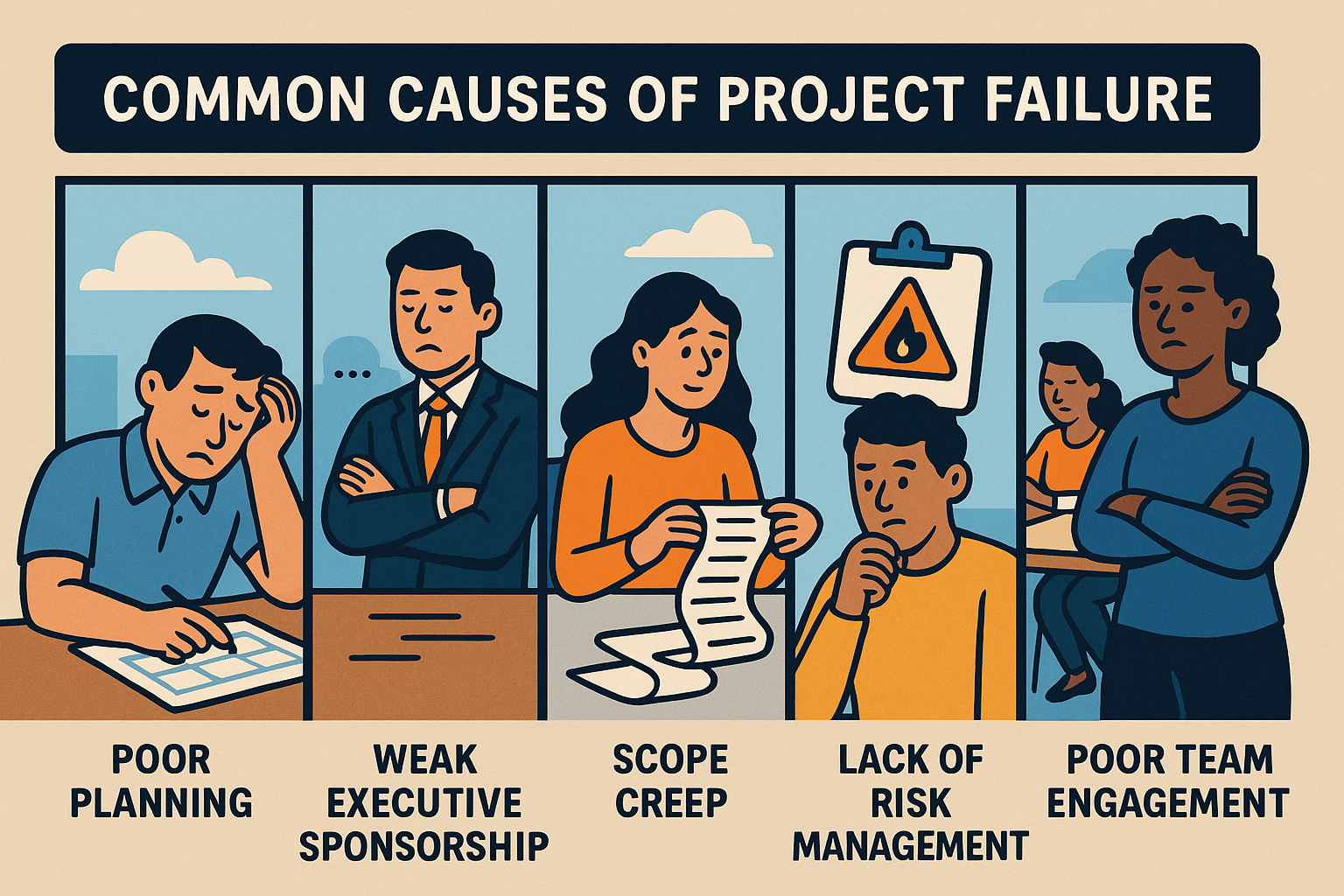
Projects don’t fail because people aren’t trying. They fail because teams, especially those just starting out, fall into predictable traps. It's not about intent. It's about awareness. You'll see me quote this numerous times:
"You do not rise to the level of your goals. You fall to the level of your systems" - James Clear
At FiftyOne Consulting, we help emerging project managers and startup leaders spot these traps early and build the habits that lead to real momentum. This guide outlines the most common failure points we’ve seen and how to avoid them before they cost you time, money, or team morale.
(A.K.A. the hidden patterns that trip up early-stage teams)
1. Poor Planning
Too often, planning is treated like a formality. You get a quick deck, some optimistic dates, and fingers crossed. Then you're a couple months in and you get the "We didn't think about that". So now you have throwaway work, a change order and a Mega-Pint sized glass of anxiety.
This isn't a plan. You need Scope "No Scope, No Hope". You need a timeline, resourcing, risks, assumption logs, etc. You need to project management. Without a plan (with supporting processes), you're setting up your team to improvise under pressure, and that's rarely sustainable. I've seen large programs have over 50% attrition of ICs (individual Contributors) because of poor planning or trying to plan too late.
What to do:
2. Weak Executive Sponsorship
Startups often assume that founder involvement equals sponsorship. Not always. If your key decision-makers aren’t actively engaged or don’t understand their role, you lose alignment fast. Your sponsors are in the escalation path. They have, or should have, the a lot of skin in the game.
Great sponsorship means actively removing blockers, championing priorities across the organization, and staying engaged from kickoff through delivery. Sponsors wield significant influence. Their support often determines whether a project moves forward or stalls out.
What to do:
3. Scope Creep Without Control
Change is natural. But if every idea gets added without reviewing the impact, your lean MVP can spiral into a bloated time and resource sink. As a project manager, you have to be able to either say "No" to the last minute addition OR be able to articulate the impact to Scope, Timeline, Cost, and of course Quality.
What to do:
4. Ignoring Risks
If you’re not actively managing risk, you’re passively waiting for problems. Risks will actuate and become issues. These are not always something you can control. From late vendors to shifting priorities and unavailable resources (especially in fast-moving startups), they will happen.
What to do:
5. Low Team Engagement
Disengaged teams don’t speak up, don’t push back, and don’t deliver consistently. This isn’t a motivation issue — it’s a visibility and trust issue. To maintain engagement, make the mission clear, trust your team to execute, and actively seek their input. These are experts in their fields — let them know their insight matters. Without that clarity and respect, execution falters."
What to do:
✅ Clear kickoff structure
✅ Defined scope and change process
✅ Basic risk tracking from the start
✅ Weekly, transparent communication
New PMs and startup leaders aren’t just box-checkers, they’re catalysts for clarity. Your job is to make the invisible visible, connect the why to the what, and keep the momentum moving.
Strong delivery habits aren't complex, they're consistent. Ever hear "consistency is key"?
Final Thought:
Project failure isn’t bad luck. It’s usually predictable. The good news is that it means it’s also preventable. Learn the patterns, build better habits, and you’ll give your projects and your team a real shot at success.